Self-Service POS Systems: Everything Restaurants Need To Know
Self-service point-of-sale (POS) systems are innovative, popular tools that are increasingly being adopted by restaurants. These systems enable customers to control their actions, such as ordering and paying, without requiring assistance from a server.
And by freeing up restaurant staff to focus more on the quality of service they provide to patrons, these systems can not only provide improved efficiency, but lead to an improved customer experience overall.
In this report, we’ll show the findings of a recent survey we ran to determine consumer preferences for using self-service systems at restaurants. We discuss the implications of the findings and what they mean for restaurant operators.
Here’s what we’ll cover:
Use of Self-Service POS Encourages Customer Retention
Order Customization Is the Most Preferred Self-Order Feature
Splitting the Bill is the Most Preferred Self-Payment Feature
Customers Want to Use Self-Service POS at Casual and Fast Casual Restaurants
Use of Self-Service POS Encourages Customer Retention
Businesses need a strong proof of ROI to adjust their strategy and accommodate self-service capabilities. That’s why we asked our respondents how the use of self-service technology would encourage repeat visits to a restaurant.
Impact of Self-service POS Capabilities on Customer Retention
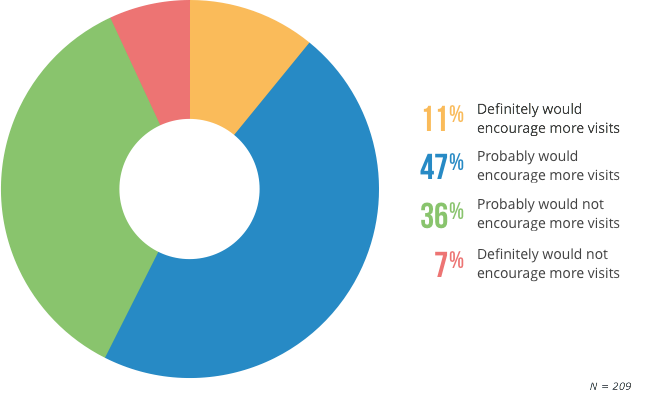
How’s this for ROI: 58 percent of respondents say a restaurant’s use of self-service POS tools would encourage them to visit said restaurant more often.
Restaurant owners and operators (should) understand the importance repeat/regular customers. This retention is the main objective of restaurant loyalty/membership strategies. And here we see self-service POS systems are positively encouraging these valuable customer bases all on their own. Not bad.
And there’s no need to worry about usage rates for these systems, because 85 percent of the U.S. consumers we surveyed have used and are familiar with self-service devices at a restaurants.
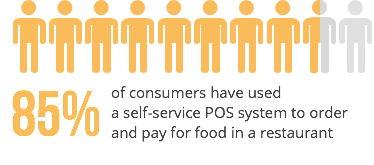
Chris Ciabarra, co-founder and chief technology officer for Revel Systems, an iPad-based POS system with self-service offerings, says that more and more patrons actually prefer using self-service POS technology.
“I see rapid [self-service] kiosk adoption across multiple verticals. They’re already a standard in Asia and Europe, and this will be a natural progression to consumer behavior in the U.S.”
Order Customization Is the Most Preferred Self-Order Feature
If you’re a restaurant looking into adopting self-service POS capabilities, you probably want to know what key capabilities consumers are looking for—so we asked.
Most Preferred Self-Ordering Features
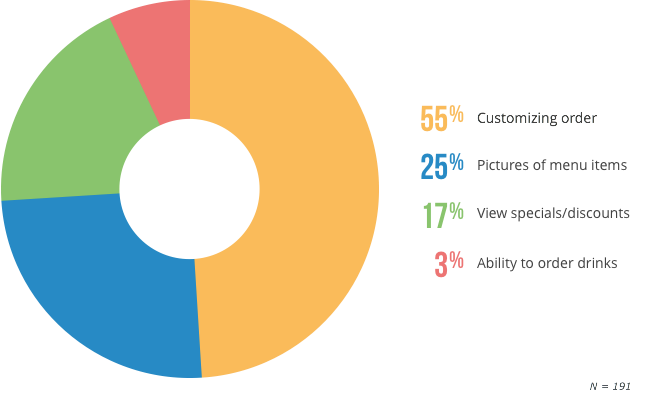
A majority of consumers list order customization as their most sought after feature for ordering food via self-service systems.
This provides a great way for restaurants to upsell modifiers and add-ons by encouraging customers to customize food items with different ingredients at a small additional cost.
Paul Motenko, co-chief executive officer of California-based Stacked Restaurants, a full-service casual restaurant that offers a create-your-own menu format, says Stacked built their restaurant concept around the ability to customize orders with self-service, tabletop tablets.
“We wanted to offer an incredible ability to customize in each of those categories, and we came to the conclusion that the only way to execute our vision in a comfortable way for our guests was to have a touchscreen device at every table. [Self-service POS] technology was the tool to facilitate the customization.”
Verifying our results, Motenko says his company has conducted guest surveys that show Stacked’s customization ability is the feature patrons appreciate most.
Example of Burger Customization Using Stacked’s System
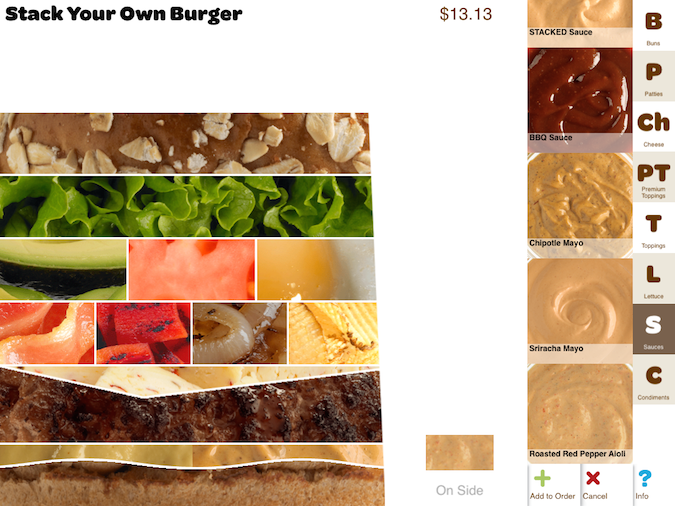
A screenshot of Stacked’s self-service POS, shown with available burger customizations
While the potential for upselling add-ons is great with these systems, you never want to “dupe” your customers. You can see in the top right corner of Stacked’s screen they have a price calculator that’s automatically updating with each modifier.
Want to offer order customization? Keep this tech in mind:
Restaurant inventory must adjust in real time both on back-of-house and customer-facing systems. The last thing you want to do is tell a customer they can’t have their order the way they customized it because you’re out of a particular product. That’s a dreadful, less-than-optimal experience.
Splitting the Bill is the Most Preferred Self-Payment Feature
As for customers’ must-have self-payment capabilities, the three quarters of respondents say the ability to split the bill is of utmost importance.
Most Preferred Self-Payment Features
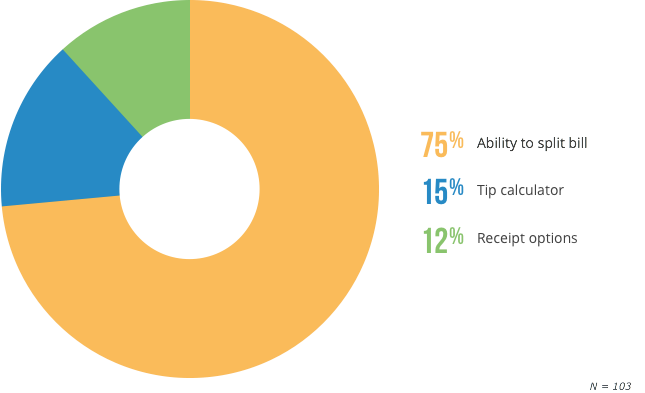
Having worked in restaurants for much of my younger life, I can personally attest to the how “annoying” splitting a bill up can be for servers. So offloading this process onto customers in an easy-to-use way not only aligns with customer’s desires but also frees servers up to spend more time with tables ensuring positive experiences are being had by all.
Motenko echos the importance of capabilities for splitting the check. It was a must-have feature when designing Stacked’s self-service POS system.
“The ability to not only pay when you want to, but to have a 10-second experience versus what can be a five minute or more experience is greatly appreciated by our guests.”
Want to offer self-service bill splitting? Keep this tech in mind:
Many restaurants (self-service and otherwise) leverage customer profiles that are saved on CRM systems. While the primary function of these systems is building retention and loyalty, they could also offer the capability to show repeat customers their previous customized orders. This would go far allowing them to develop “their own” favorite item that they order every time. or it could encourage them to branch out and get something different than the last visit.
Customers Want to Use Self-Service POS at Casual and Fast Casual Restaurants
While these benefits and must-have features for self-service POS systems are great, they’re not going to be a fit for every type of restaurant. It’s incredibly important that restaurant management software you adopt directly serves to improve customer experiences at your restaurant.
Preferred Type of Restaurant for Ordering Via Self-Service POS
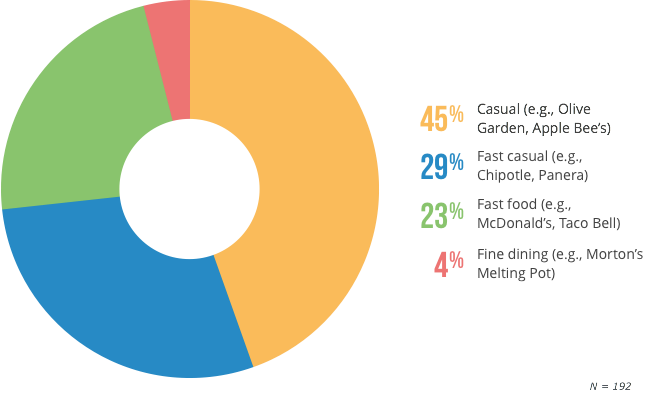
Preferred Type of Restaurant for Paying Via Self-Service POS
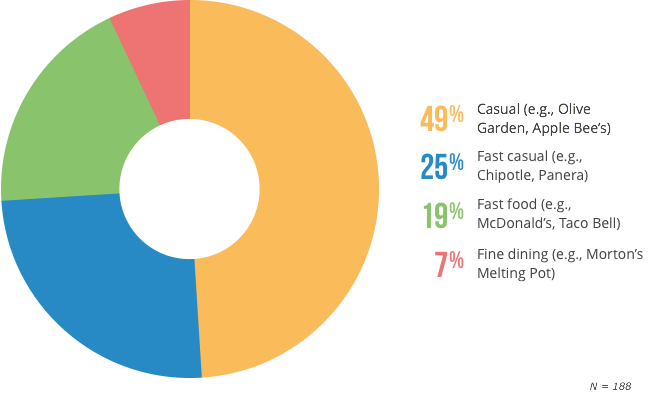
For both ordering and paying via self-service, 74 percent of respondents prefer to do so at casual or fast casual restaurants.
It makes sense that casual and fast casual restaurants are top choices for self-service POS usage. These are the restaurants frequented by Gen Y and Millennials; the restaurants patronized during lunch hours; the restaurants where families grab a quick bite after soccer practice.
The menus in these restaurants also work nicely with the customization capabilities of self-service systems. For example, many fast casual restaurants like Chipotle, Panera, Blaze Pizza etc. are built on a “build your own _____” concept, which is easily replicated via tablet ordering.
Motenko says he’s not surprised that only 23 and 19 percent of respondents prefer using self-service POS systems in fast food establishments, as these eateries are already characterized by a quick and streamlined ordering and payment process.
John Regal, chief marketing officer at Ziosk, a POS-integrated web-enabled tablet provider, also sees the need to tailor the integration of self-service technology around restaurant type.
“The use and benefit of technology differs by the industry segment it is servicing. For casual dining, the benefit of tabletop devices is they act as a server assistant (as opposed to replacing a server), giving them more time to interact with guests at the table.”
What’s the Next Steps?
If these self-service POS capabilities peek your interest, first spend time determine how you could integrate the tools into your business. Remember that these systems should only serve to improve your customer experiences.
If you think they fit your concept, it’s time to find restaurant POS systems that support self-service. Remember that you’ll want to put an emphasis on:
Restaurant management capabilities that ensure a seamless customer experience and provide your servers, bartenders, cooks, and managers everything they need to succeed.
Restaurant inventory capabilities that integrate in real-time with customer-facing systems so that orders don’t have to be cancelled or adjusted based on products being out of stock.
Customer relationship management systems to not only build a sustainable, loyal customer base, but also to offer bonus features like storing past customer orders and even payment capabilities.
With all this in mind, adopting new foundational software for your restaurant(s) can no doubt be a jarring experience. That’s why we’re here. Our team of expert retail software advisors will help you build a small list of the best POS systems for your business.